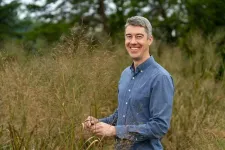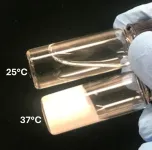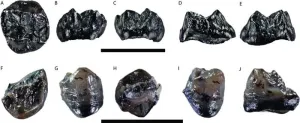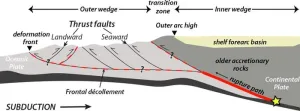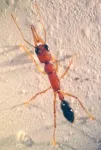(Press-News.org) On Feb. 22, a lunar lander named Odysseus touched down near the Moon’s South Pole and popped out four antennas to record radio waves around the surface—a moment University of Colorado Boulder astrophysicist Jack Burns hails as the “dawn of radio astronomy from the Moon.”
It was a major achievement for the tenacious lander, which was built by the Houston-based company Intuitive Machines and had to overcome a series of technical difficulties to make it to the lunar surface. Burns is co-investigator on the radio experiment that flew aboard Odysseus called Radio wave Observations at the Lunar Surface of the photo Electron Sheath (ROLSES).
He’ll give an update on the ROLSES data, and will share what’s in store for future radio astronomy from the Moon, this week at the 244th Meeting of the American Astronomical Society in Madison, Wisconsin. A press conference will take place Monday, June 10 at 10:15 a.m. Central Time.
“It was heroic for Intuitive Machines to land under these conditions, and to deploy our antennas, take some data and get that data back to Earth,” said Burns, professor emeritus in the Department of Astrophysical and Planetary Sciences at CU Boulder.
Natchimuthuk Gopalswamy at NASA’s Goddard Space Flight Center in Greenbelt, Maryland, led the ROLSES experiment. The instrument, which included the antennas and a device called a radio spectrometer, was designed to record a wide range of radio emissions near the Moon and deep in space.
Despite the challenges of the mission, ROLSES managed to view Earth in a unique way.
“We viewed Earth as an exoplanet, or a planet orbiting another star,” Burns said. “That enables us to ask: What would our radio emissions from Earth look like if they came from an extraterrestrial civilization on a nearby exoplanet?”
Earth selfie
Odysseus traveled to the Moon as part of NASA’s Commercial Lunar Payload Services (CLPS) program, an ambitious effort to land spacecraft built by private companies on the lunar surface. It was the first such mission to achieve what NASA calls a “soft landing,” although it tipped onto its side in the process.
But it almost didn’t happen. Among other challenges, Odysseus wasn’t able to use its laser-guided navigation system to land on the Moon’s craggy surface. Instead, operators at Intuitive Machines relied entirely on the lander’s optical camera system—an impressive feat of maneuvering.
As Odysseus was traveling to the Moon, one of the ROLSES antennas slightly overheated and popped out of its housing on the lander. (A selfie from the spacecraft shows the antenna sticking out in space). It turned out to be a stroke of good luck, Burns said.
The team used the accident to look back at Earth and record radio waves emanating from the planet for nearly an hour-and-a-half. Human technologies, including cell phones and broadcast towers, churn out radio radiation on a near constant basis. Astronomer Carl Sagan spearheaded a similar experiment from NASA’s Galileo spacecraft in the 1990s, but the ROLSES data were more exhaustive.
Burns noted that scientists may be able to look for similar fingerprints coming from planets far away from our own—a potential sign of intelligent life.
Moonrise
He and his colleagues are just getting started. NASA has already greenlit a second ROLSES experiment, which will fly on another CLPS lander, likely in 2026.
The astrophysicist is also part of a third CLPS experiment, known as the Lunar Surface Electromagnetics Experiment-Night (LuSEE-Night), scheduled to arrive at the Moon in 2026. The instrument will land on the far side of the Moon, a quiet spot that human radio emissions can’t reach. From there, it will gaze at radio emissions coming not from Earth but from the earliest days of the Universe before the first stars formed called the Dark Ages—shedding more light on how the cosmos evolved during this crucial junction its history.
“Because NASA is going to send two or three landers to the Moon every year, we have a way to upgrade our instruments and learn from what goes wrong in a way we haven’t been able to do since the early days of the space program,” Burns said.
END
In new experiment, scientists record Earth’s radio waves from the moon
2024-06-07
ELSE PRESS RELEASES FROM THIS DATE:
Restoring our ubiquitination machinery to overcome resistance to cancer therapy
2024-06-07
“[...] the identification of ubiquitin-conjugating enzymes like UBE2J1 and the innovative deployment of PROTAC-type androgen receptor degraders are crucial in combating prostate cancer and overcoming therapeutic resistance.”
BUFFALO, NY- June 7, 2024 – A new editorial paper was published in Oncoscience (Volume 11) on May 6, 2024, entitled, “Restoring our ubiquitination machinery to overcome resistance in cancer therapy.”
In this new editorial, researchers Xiaoling Li and Ping Mu from ...
Sky’s the limit for biofuels
2024-06-07
The United States has enough biomass potential to produce 35 billion gallons per year of aviation biofuel by 2050, a new report confirms.
Oak Ridge National Laboratory’s John Field provided biomass feedstock production expertise to the report focused on the role of the bioeconomy in U.S. decarbonization strategies, which was produced by the Department of Energy’s DECARB program.
The report examined the role of biomass in reducing greenhouse gas emissions across the economy, including opportunities to reach negative emissions. It includes data ...
Nirmatrelvir-ritonavir and symptoms in adults with postacute sequelae of SARS-CoV-2 infection
2024-06-07
About The Study: The results of this randomized clinical trial showed that a 15-day course of nirmatrelvir-ritonavir in a population of patients with postacute sequelae of SARS-CoV-2 infection (PASC) was generally safe but did not demonstrate a significant benefit for improving select PASC symptoms in a mostly vaccinated cohort with protracted symptom duration. Further studies are needed to determine the role of antivirals in the treatment of PASC.
Corresponding Author: To contact the corresponding authors, email Linda N. Geng, M.D., Ph.D. (geng@stanford.edu) and Upinder Singh, M.D. (usingh@stanford.edu).
To ...
Stanford Medicine trial:15-day Paxlovid regimen safe but adds no clear long-COVID benefit
2024-06-07
In a clinical trial conducted by Stanford Medicine investigators and their colleagues, a 15-day course of Paxlovid — an antiviral drug combination targeting SARS-CoV-2, the virus that causes COVID-19 — proved safe as an extended-duration treatment but didn’t lessen select symptoms of the syndrome known as long COVID: the persistence, or reappearance, of COVID-related symptoms three months or more after an initial COVID-19 infection.
The findings are described in a paper to be published ...
Antioxidant gel preserves islet function after pancreas removal
2024-06-07
Northwestern University researchers have developed a new antioxidant biomaterial that someday could provide much-needed relief to people living with chronic pancreatitis.
The study will be published on June 7 in the journal Science Advances.
Before surgeons remove the pancreas from patients with severe, painful chronic pancreatitis, they first harvest insulin-producing tissue clusters, called islets, and transplant them into the vasculature of the liver. The goal of the transplant is to preserve a patient’s ability to control their own blood-glucose levels without insulin injections.
Unfortunately, the ...
Tiny new species of great ape lived in Germany 11 million years ago
2024-06-07
Ancient apes in Germany co-existed by partitioning resources in their environment, according to a study published June 7, 2024 in the open-access journal PLOS ONE by Madelaine Böhme of Eberhard Karls University of Tübingen, Germany and David R. Begun, of University of Toronto, Canada and colleagues.
The Hammerschmiede fossil site in Bavaria, Germany is best known for exceptional remains of the ancient great ape Danuvius dating to the late Miocene Epoch, 11.6 million years ago. Other experts contest the strength of the evidence to support whether Danuvius is a hominid or whether ...
Cascadia Subduction Zone, one of Earth’s top hazards, comes into sharper focus
2024-06-07
Off the coasts of southern British Columbia, Washington, Oregon and northern California lies a 600 mile-long strip where the Pacific Ocean floor is slowly diving eastward under North America. This area, called the Cascadia Subduction Zone, hosts a megathrust fault, a place where tectonic plates move against each other in a highly dangerous way. The plates can periodically lock up and build stress over wide areas―eventually to be released when they finally lurch against each other. The result: the world’s greatest earthquakes, shaking both seabed and land, and generating tsunamis 100 feet high or more. Such a fault ...
Unlocking another piece of the Parkinson’s puzzle – scientists reveal workings of vital molecular switch
2024-06-07
Scientists at the University of Dundee have uncovered the inner relay of a molecular switch that protects the brain against the development of Parkinson’s disease.
The research provides new potential strategies to develop drugs that may benefit patients with Parkinson’s.
Parkinson’s is the fastest growing brain disorder in the world, however, there are currently no treatments that can slow or arrest the condition.
Previous research conducted at the University had found a gene called PINK1 is central to protecting brain cells against stress. In patients ...
A protein that enables smell—and stops cell death
2024-06-07
While smell plays a considerable role in the social interactions of humans—for instance, signaling fear or generating closeness—for ants, it is vitally important. Researchers from New York University and the University of Florida found that a key protein named Orco, essential for the function of olfactory cells, is also critical for the cells’ survival in ants.
Their study showed that mutating the orco gene in Harpegnathos saltator jumping ants dramatically decreased the number of olfactory neurons, suggesting that Orco is necessary for the development and life of these cells. The findings, published in Science Advances, offer insights into the cellular ...
New research finds lake under Mars ice cap unlikely
2024-06-07
ITHACA, N.Y. – Cornell University researchers have provided a simple and comprehensive – if less dramatic – explanation for bright radar reflections initially interpreted as liquid water beneath the ice cap on Mars’ south pole.
Their simulations show that small variations in layers of water ice – too subtle for ground-penetrating radar instruments to resolve – can cause constructive interference between radar waves. Such interference can produce reflections whose intensity and variability match observations to date – not only in the area proposed to be liquid water, but across the so-called south ...

